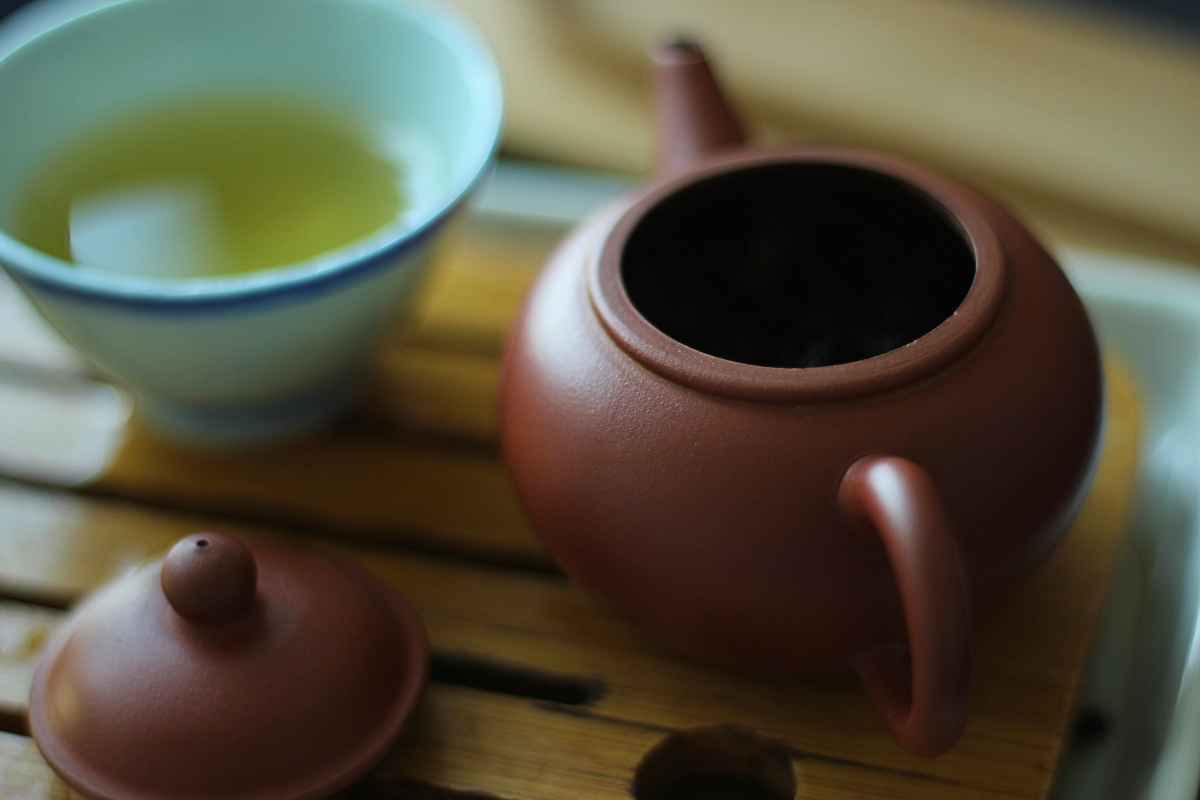It was another hot day in Belgium and I started it by doing an extensive session with a sample I had left. Several weeks ago, Tee Kontor Kiel sent me a package containing some samples and the Yiwu Gushu Sheng 2008 was one of those samples. I had already done a session before this one and I was amazed by the tea. That’s why I wanted to write an article about it.
Yiwu Gushu Sheng 2008
These leaves are supposedly from gushu tea trees of around 300-500 years old in the Yiwu area in Yunnan’s Xishuangbanna. A fun fact about this tea is that in order to pick these leaves, people needed to climb the trees. It’s produced according to the ancient methods, like stone pressing and wrapping in hand-scooped tree fiber paper.
When I wanted to drink this tea for the first time several weeks ago, I have to admit that I was hesitant to try it. The leaves seemed really small; almost too small to be good… After drinking it, I was ashamed that I thought of the leaves that way because it’s one hell of a tea!!
Don’t know where to buy tea online? I made a page on the website with over 290 online shops and I keep updating it regularly. You can check it over here.
Tea Tasting
- Water 99°C
- Around 5g for a 120ml Neiziwaihong Qing dynasty teapot
Upon closer inspection, I see dark green tints with some brown and beige spots. It looks tightly compressed, even though it’s stone pressed. The dry leaves seem rather small. I’m getting an aroma of slightly damp hay and a tiny bit of grass. Once the leaves get wet, a very faint smokiness pops up and some sweet fruits are also noticeable.

Infusion 1 (15 sec): this infusion has a light beige colour. This could be because I put in a tightly compressed chunk and it hasn’t opened yet. I’m getting a subtle sweetness. This is really pleasant to start the session; a light sweetness with some red fruits.
Infusion 2 (15 sec): the colour is darker now; it has become more yellow and a darker beige. Such an intense sweetness when the liquor coats my mouth. Sweet notes of red fruits. No sharp edges and an amazing aftertaste.
Infusion 3 (20 sec): the sweetness and red fruits are still going strong, but I also sense a freshness creeping up. Not really at the surface, but you feel it’s in there somewhere. The aftertaste is similar to infusion 2 and it stays a bit longer.
Infusion 4 (20 sec): the liquor seems to be getting thicker each infusion. It almost looks like syrup. Right at the start, you get a burst of sweet and fruity. This dies out slowly and the finish reminds me of a very sweet aged white tea. I can taste a bit of storage, but it’s not too much.
Infusion 5 (20 sec): more of the same, but not as intense. I will do a longer infusion after this one. The aftertaste is still going. I’m also getting some of the storage notes from earlier.
Infusion 6 (30 sec): still getting the same flavour profile, but somewhere in the middle, a very sweet top note pops up. It’s almost as if I’m eating a strawberry wine gum. It comes out of nowhere and flows through the rest of the infusion into the aftertaste.
Infusion 7 (35 sec): the flavours are still there and noticeable, but they don’t stay around for long. The storage is still noticeable and it’s similar to an aged white tea. Still sweet!
Conclusion
At first, I was hesitant to drink this one because the leaves looked really small. Luckily, I tried it a few weeks ago and was amazed by its potential. I felt bad for thinking it would be mediocre at best… It’s definitely not a mediocre tea; it’s fantastic!
It’s sweet, but not too sweet. It’s fruity, but not too fruity. It feels just right. The aftertaste is also something that makes this tea stand out. Perfect! So happy I got to experience this one and I’m sure I will be thinking of this session in the coming months. It was magical.
If you want to buy this tea, you can buy it over here.




